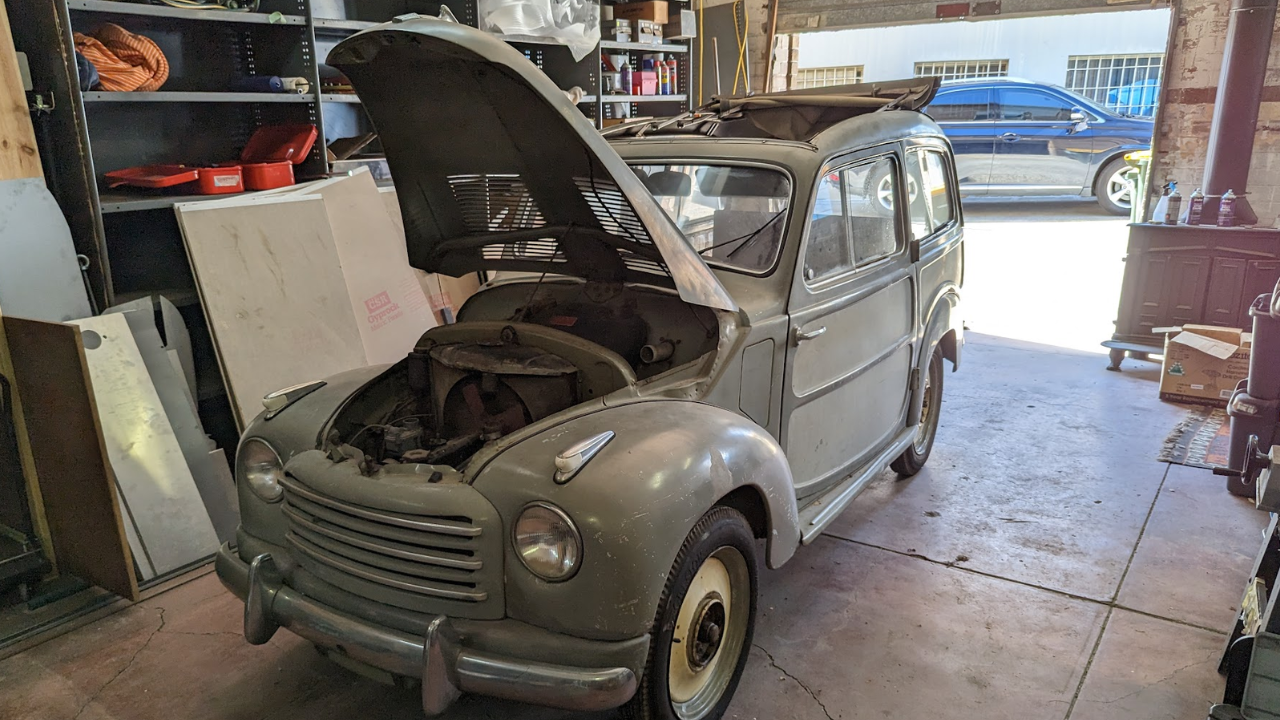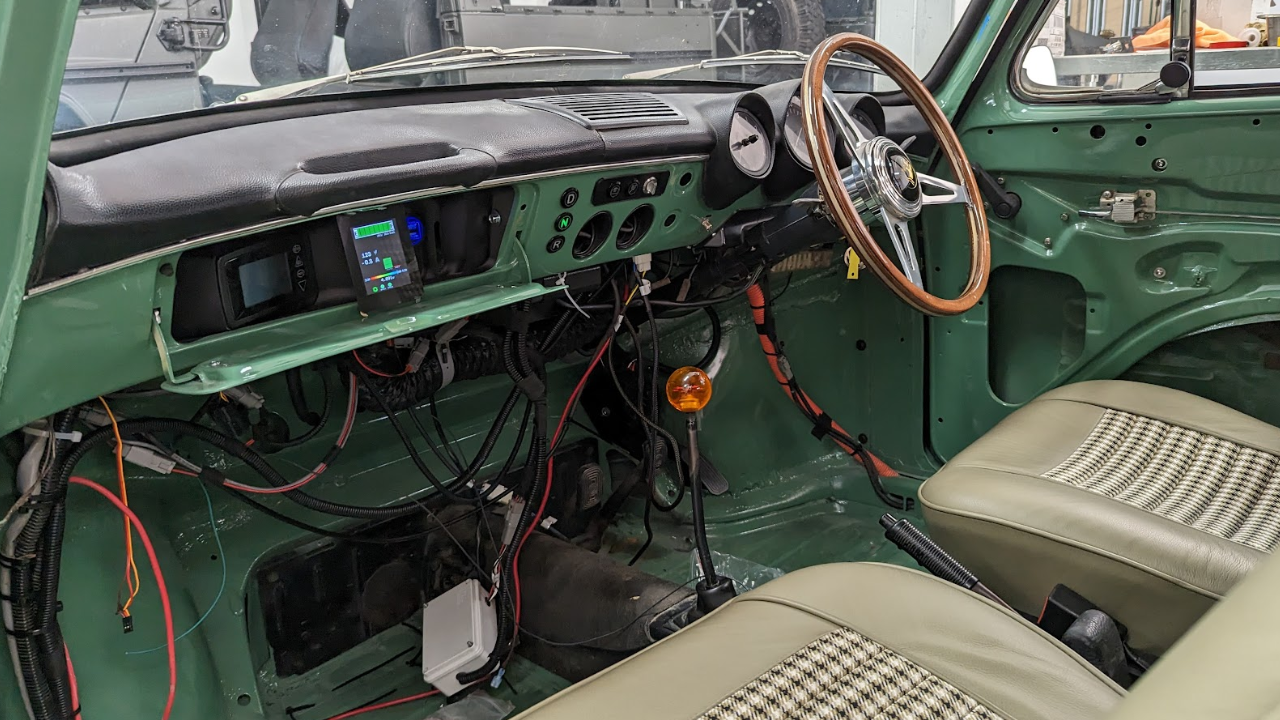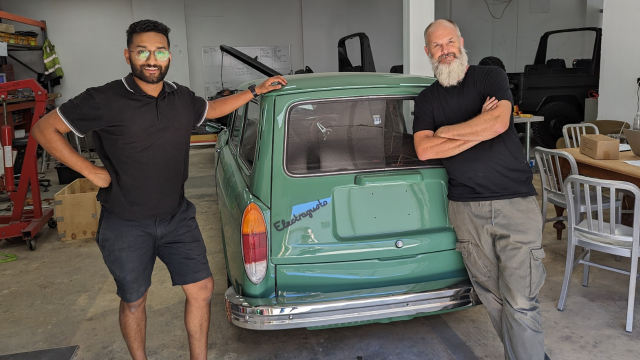Electric vehicle conversions are rising in popularity as a way of breathing new life into the bodies of older cars, or as passion projects for automotive enthusiasts. It’s a bit of both to Sydney team Electrogusto, which sees the emerging conversion industry as building “modern hotrods”.
On a whim, I decided to go and visit Electrogusto’s workshop. It was within walking distance of me, so I decided to pass it by and maybe stick my head in if the doors were open. Electric vehicle conversion businesses don’t typically sell merchandise or any products in a retail capacity, so it was unlikely that, if I turned up, someone would be there waiting to speak to me.
But sure enough, the workshop’s team was there, working away on their project car – a 1973 Volkswagen Squareback, which has an ‘Electrogusto’ badge stuck on the back of it. The team has been working on the car for three years or so now as a passion project, with a backlog of cars to work with that belong to interested car enthusiasts. This includes an old Citroën H5, a 1948 Fiat Topolino, and two Mercedes Benz G240 Wolfs.
“Volkswagens are sort of perfect for converting. People love them, and there’s already a lot of products out on the market that are already there to help us convert these cars,” Electrogusto director Nick Cummins told Gizmodo Australia.

Just as a quick recap, there’s a reason that old cars are perfect for electric vehicle conversions. When you consider how expensive it would be to refurbish the original car, with all of the original parts, you can end up spending just as much on an equivalent electric vehicle conversion, all the while getting a more powerful vehicle without reliance on petrol. Electric vehicle systems (if done right) also require much less maintenance.
We’ve spoken to quite a number of mechanics and electrical engineers about this topic, in particular, Jaunt Motors’ Dave Budge and OZ DIY Electric’s Jacques Hickey. It’s fairly widely agreed that these older cars, with less technology and complication inside them to begin with, are perfect for electrification, while newer cars can still have their parts replaced relatively cheaply.
Which is why Electrogusto is focused on these classic vehicles.
The Fiat Topolino kind of underscores why EV conversions just make sense. Recycling a tiny car’s frame, with a fresh new battery-powered system and drivetrain, underscores the best approach to sustainability. Recycling and using less – a sentiment that Cummins believes is crucial to the build.
“These cars make people smile… They’re so lovely, they’ve got a soul. They’re also way better for the environment, which we all have to be moving towards and working on,” Cummins said.
“One day, you know, I think we’ll all have to drive electric cars – there’ll be no choice. We won’t be able to drive electric cars. So what happens to beautiful pieces of art like [the Fiat Topolino]?”

Modern-day hot rods
That ‘pieces of art’ line from Cummins definitely stuck out to me, and I guess that’s what he wanted, considering he has a background in advertising and marketing (with an interest in car repair), but it’s always interesting to hear how people see their work.
I’d like to think it’s a bit of a mix between being sustainability-minded and being hobbyists, but Cummins is convinced that he, and conversion designers like him, are creating modern-day hot rods, with the hope that more people could one day be interested in doing big projects like these.
“We’re like the modern-day hot rodders”, Cummins said.
“A lot of people probably even touch [conversions], mechanics or engineers might be more interested in just something that’s a standard thing that they’ve done before.”
But there’s a lot of work that goes into this, and conversion workshops can’t do all the work themselves. For example, Cummins said that the five batteries for the Volkswagen Squareback were sourced from wrecked Teslas in Sweden. Cummins described the market for acquiring such batteries as a sort of “black market”.

“One of the great things about the conversion industry is that we all sort of know each other. There’s a lot of sharing of information and we all sort of let each other know when there are batteries out there,” Cummins said.
“I think there’ll be a new sort-of economy of second-hand batteries. I’m sure there’s a lot of wreckers now that are starting to consider just focusing on Tesla parts and other electric vehicle parts.”
Of course, Electrogusto is also looking at “off the shelf” batteries from kit makers, without needing to rely on scrapped cars, but Cummins said it’s a bit of a jigsaw puzzle. It’s about what’s going to fit in – and for the Squareback, that meant five repurposed Tesla batteries.
And that number is intentional. While the workshop is enthusiastic about breathing new life into the car, they don’t want to “bastardise the car too much”, in Cummins’ own words. They don’t want to cut panels out and have things hanging underneath it.
Making the car work with a whole new system while retaining the original aesthetic isn’t easy, but it’s something that conversion companies have been up to for some time now.
And hopefully, the electrified Squareback will be just as gorgeous when it is finished.

So who buys a conversion?
Most of Electrogusto’s customers fit into a single category, according to Cummins.
“I think most of our customers have been bitten by the car bug,” Cummins said. “Our customers are car people”
He reckons there’s a lot of interest from classic car lovers that don’t want to “drive a fridge”, referring to Tesla and its design (which he’s not particularly interested in).
And he told us that customers are willing to spend massive amounts of money on these project cars, from between $60,000 to an “open chequebook” – and will typically provide the car to work on.
Realistically speaking, however, with Cummins saying that Electrogusto wouldn’t make a lot of money on the individual project, the director said that an average cost would be around $80,000 to do it properly.
Speaking specifically about Electrogusto, which offers bespoke electric vehicle conversions (instead of ‘kit’ conversions like Jaunt Motors), that’s what you could expect to pay, but it’s largely on a case-by-case basis.
In any case, it’s always terrific to see an ambitious car conversion like this. I can’t wait to see the finished product.
